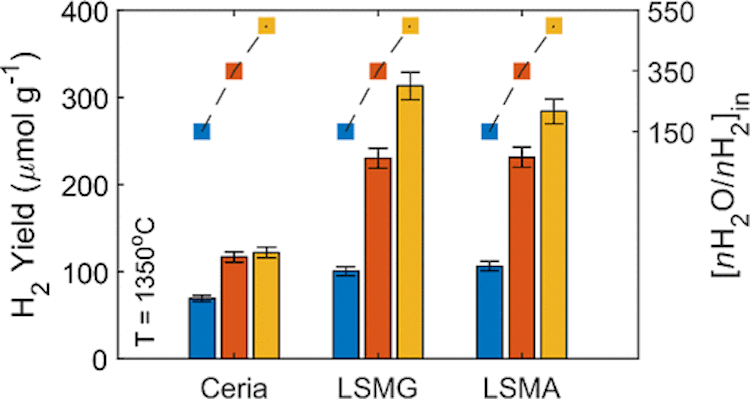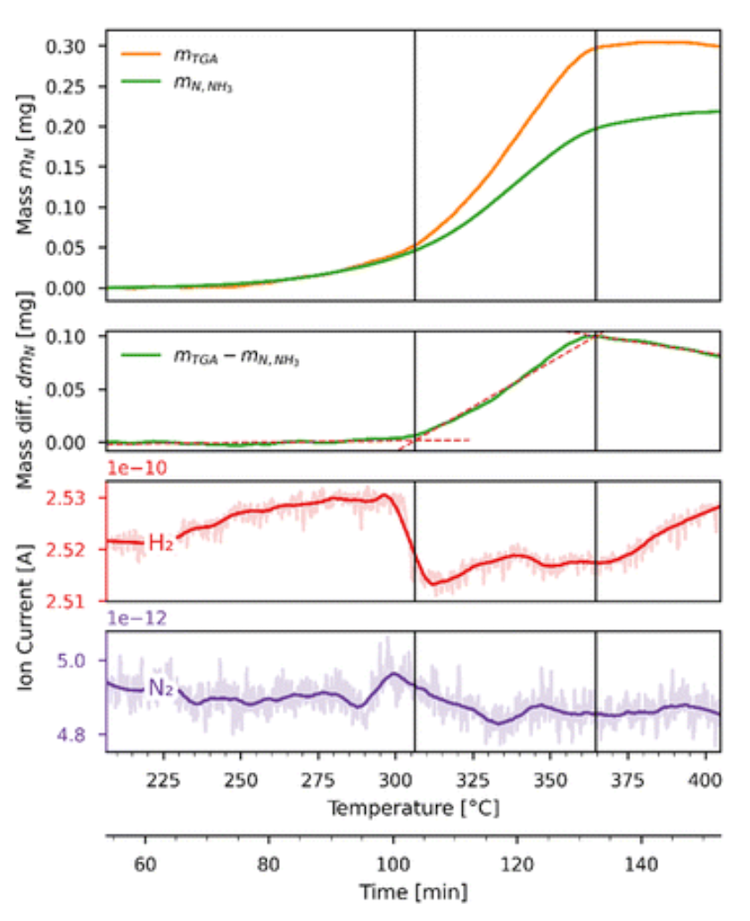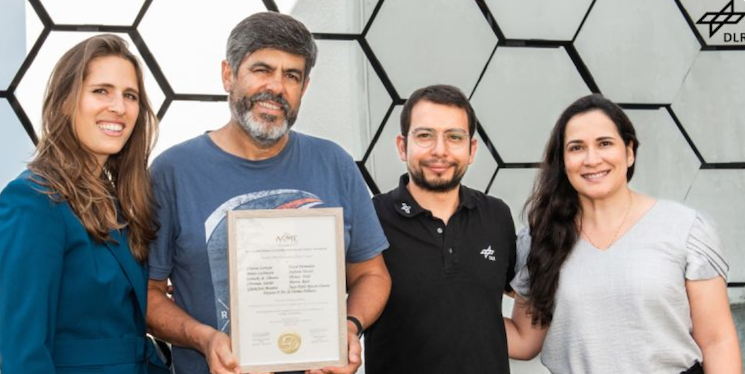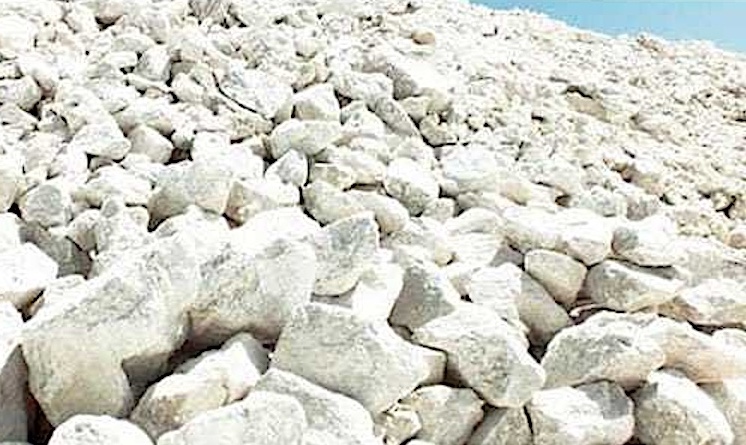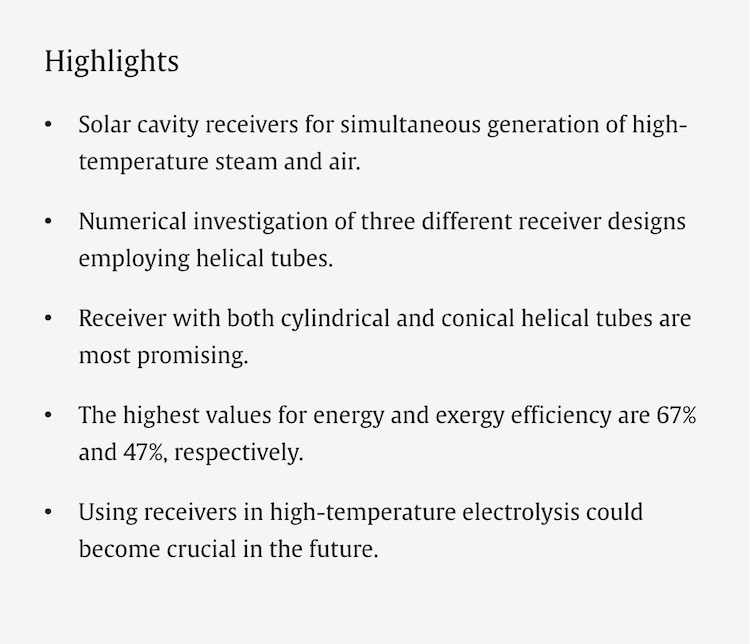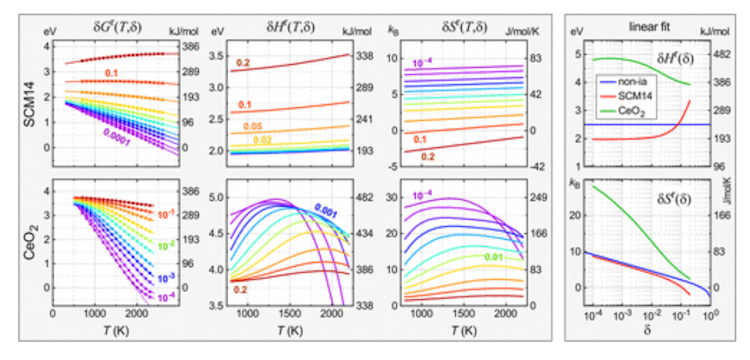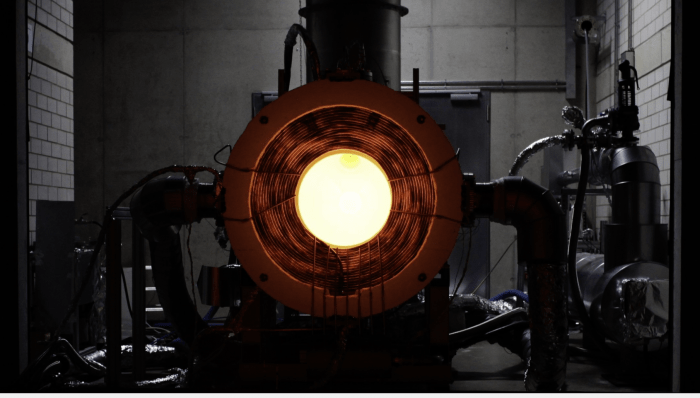Abstract Solar thermochemical hydrogen production using redox-active metal oxides is a promising pathway for the production of green hydrogen and synthetic fuel precursors. Herein, the perovskite material (La0.6Sr0.4)0.95Mn0.8Ga0.2O3−δ (LSMG6482) is identified as a promising metal oxide for thermochemical water splitting. LSMG6482, along with more-established water splitters ceria and (La0.6Sr0.4)0.95MnxAl1–xO3−δ (LSMA) perovskites, is experimentally characterized via …
Published at Royal Society of Chemistry – Thermochemical production of ammonia via a two-step metal nitride cycle – materials screening and the strontium-based system
Abstract Ammonia synthesis via the catalytic Haber–Bosch process is characterized by its high pressures and low single-pass conversions, as well as by the energy-intensive production of the precursors H2 and N2 and their concomitant greenhouse gas emissions. Alternatively, thermochemical cycles based on metal nitrides stand as a promising pathway to green ammonia production because they …
DLR researchers win ASME Best Paper Award
We are pleased to share that this year the “𝗢𝘂𝘁𝘀𝘁𝗮𝗻𝗱𝗶𝗻𝗴 𝗣𝗮𝗽𝗲𝗿 𝗔𝘄𝗮𝗿𝗱” from the ASME (The American Society of Mechanical Engineers) goes to a team at our institute! This was announced during the 18th International hashtag#Conference on Energy Sustainability in Anaheim, USA. The hashtag#award aims to promote high quality research in the field of energy …
Continue reading “DLR researchers win ASME Best Paper Award”
Solar-heated cement calcining – aided by the greenhouse gas effect?
Solar-heated cement calcining: “This is the key point: not only are we addressing carbon emissions from the heat input, which is traditionally supplied by fossil fuels, we’re also addressing the CO2 naturally liberated from calcining the calcium carbonate.” Solar-heated cement calcining – aided by the greenhouse effect? Researchers at Sandia National Laboratories are advancing a …
Continue reading “Solar-heated cement calcining – aided by the greenhouse gas effect?”
DOE announces CST winners of $33 million for industrial decarbonization
U.S. DEPARTMENT OF ENERGY ANNOUNCES $33 MILLION TO DEPLOY SOLAR TECHNOLOGIES TO DECARBONIZE AMERICA’S INDUSTRIAL SECTOR Nine Projects Across Seven States Will Support Solar-Powered Production of Hydrogen and Lower Emissions from the Aviation, Food and Beverage, and Other Sectors WASHINGTON, D.C.—In support of the Biden-Harris Administration’s Investing in America agenda, the U.S. Department of Energy …
Continue reading “DOE announces CST winners of $33 million for industrial decarbonization”
Published at Applied Thermal Engineering – Numerical investigation and comparison of tubular solar cavity receivers for simultaneous generation of superheated steam and hot air
Abstract: Solar cavity receivers are a crucial technology to transform solar energy into easily usable thermal energy. Various cavity receiver structures employing helical absorber tubes were investigated to provide either superheated steam or hot air efficiently. However, few studies have focused on receivers that generate both hot fluids simultaneously. The simultanoues generation can lead to …
A new common language to speed solar hydrogen research
IMAGE©Chemical Potential Analysis as an Alternative to the van’t Hoff Method: Hypothetical Limits of Solar Thermochemical Hydrogen. Could the Chemical Potential Analysis method work better than the van’t Hoff method? NREL’s Stephan Lany proposes a new common language to help solar thermochemistry researchers select the redox materials that will most efficiently generate green hydrogen. He …
Continue reading “A new common language to speed solar hydrogen research”
Heat trap demonstrated in quartz at over 1,000°C for solar receivers
After the solar heat trap experiment measuring the temperature increase to 1050°C at the back of the solar receiver inside a solid block of quartz, even at the front, the temperature measured 450°C IMAGE©Solar thermal trapping at 1,000C and above. Solar receiver efficiency in concentrated solar thermal (CST) energy is determined by how much solar …
Continue reading “Heat trap demonstrated in quartz at over 1,000°C for solar receivers”
Published at Advanced Energy Materials – Thermochemical Oxygen Pumping with Perovskite Reticulated Porous Ceramics for Enhanced Reduction of Ceria in Thermochemical Fuel Production
Thermochemical Oxygen Pumping with Perovskite Reticulated Porous Ceramics for Enhanced Reduction of Ceria in Thermochemical Fuel Production Abstract: Within this work, reticulated monolithic foams and granules made from CaMnO3 − δ and strontium substituted variations are demonstrated to significantly improve the performance of a water splitting redox oxide when employed as a thermochemical oxygen pumping material. …
Published at Energy – Analysis of heat and mass transfer in a porous solar thermochemical reactor
IMAGE©Synhelion – solar heat for industry Abstract: Solar thermochemistry shows great potential as a viable solution for addressing the challenge of energy storage. The design of the reactor is still challenging the development and rapid upscaling of solar thermal conversion and storage processes. This study presents a novel reactor capable of gas reheating and develops …


